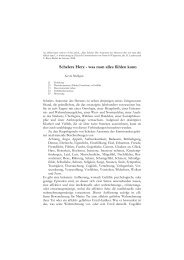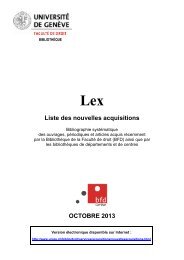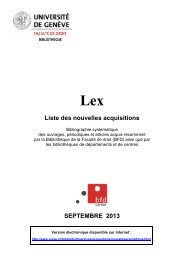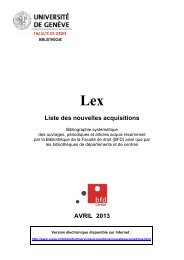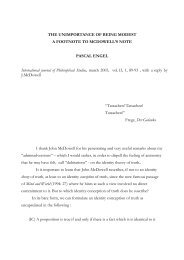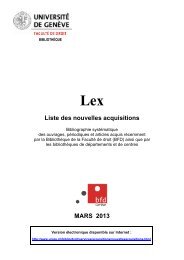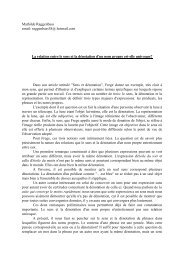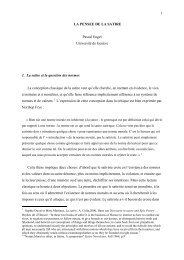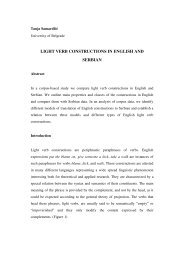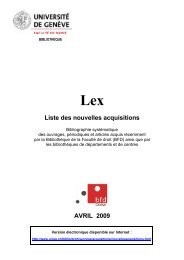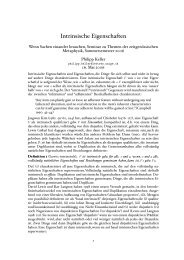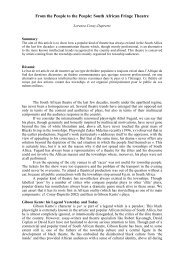Translational Research - Université de Genève
Translational Research - Université de Genève
Translational Research - Université de Genève
You also want an ePaper? Increase the reach of your titles
YUMPU automatically turns print PDFs into web optimized ePapers that Google loves.
Host Response<br />
Marc Chanson<br />
Department of Pediatrics<br />
Marc Chanson obtained his PhD in 1991 at the University of Geneva. From 1991 to 1993 he was<br />
Post Doctoral Fellow at the Albert Einstein College of Medicine, Department of Neurosciences,<br />
in New York. Before his return to Geneva in 1995 he was postdoctoral Fellow at the Department<br />
of Physiology at the University of Utrecht. He was nominated Lecturer in 2002 and Associate<br />
Professor in 2012.<br />
Gap junctional intercellular communication in cystic fibrosis airway disease<br />
We are studying the regulation and function of gap junction channels in normal and inflamed<br />
lungs. Gap junctions interconnect ciliated airway epithelial cells that constitute the physical<br />
barrier between the host and the environment. In cystic fibrosis (CF), mutations of the cystic<br />
fibrosis transmembrane conductance regulator (CFTR), which is expressed in ciliated cells, alters<br />
the airway epithelium barrier. This impaired <strong>de</strong>fence is associated with chronic infection and<br />
inflammation of the lung, leading to progressive loss of respiratory function. However, the links<br />
between the genetic <strong>de</strong>fect in CF and initiation of the chronic infection of the airways are poorly<br />
known. We have found that CFTR regulates the activity of gap junction channels and that gap<br />
junctional intercellular communication contributes to the <strong>de</strong>fence mechanisms of airway<br />
epithelial cells to infection. More recently, we have observed that quorum sensing molecules<br />
produced by opportunistic pathogens in CF (Pseudomonas aeruginosa, Staphylococcus aureus)<br />
interfere with the function of gap junctions in airway epithelial cells. Further studies aim at<br />
the analysis of the un<strong>de</strong>rlying mechanisms and at un<strong>de</strong>rstanding the consequence of gap<br />
junction channel <strong>de</strong>regulation in the pathogenesis of CF.<br />
56 <strong>Université</strong> <strong>de</strong> <strong>Genève</strong> • Faculté <strong>de</strong> mé<strong>de</strong>cine<br />
Losa D, Chanson M, Crespin S (2011). Connexins as therapeutic targets in lung disease. Expert<br />
Opinion on Therapeutic Targets 15:989-1002<br />
Scheckenbach KEL, Losa D, Crespin S, Du<strong>de</strong>z T, Bacchetta M, O’Grady S, Chanson M (2011). PGE2<br />
regulation of CFTR activity and airway surface liquid volume requires gap junctional<br />
communication. Am J Respir Cell Mol Biol 44:74-82.<br />
Sarieddine MZ, Garcia I, Foglia B, Kwak BR, Chanson M (2009). Targeting Connexin43 protects<br />
against acute lung inflammation. J Cell Mol Med 13: 4560-4570.<br />
Huang S, Du<strong>de</strong>z T, Scerri I, Thomas MA, Giepmans BNG, Suter S, Chanson M (2003). Defective<br />
activation of c-Src in CF airway epithelial cells results in loss of TNF-α-induced gap junction<br />
regulation. J Biol Chem 278: 8326-8832.<br />
Chanson M, Scerri I, Suter S (1999). Defective regulation of gap junctional coupling in cystic<br />
fibrosis pancreatic duct cells. J Clin Invest 103: 1677-1684.<br />
Contact: Marc.Chanson@hcuge.ch<br />
A human airway epithelial cell surroun<strong>de</strong>d<br />
by Pseudomonas aeruginosa (in red) and expressing<br />
the apoptotic marker AnnexinV (in green).<br />
Host Response<br />
<strong>Université</strong> <strong>de</strong> <strong>Genève</strong> • Faculté <strong>de</strong> mé<strong>de</strong>cine<br />
57



